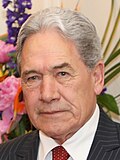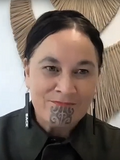| |||||||||||||||||||||||||||||||||||||||||||||||||||||||||||||||||||||
All 120 seats (plus any overhang) in the House of Representatives of New Zealand 61 seats needed for a majority | |||||||||||||||||||||||||||||||||||||||||||||||||||||||||||||||||||||
|---|---|---|---|---|---|---|---|---|---|---|---|---|---|---|---|---|---|---|---|---|---|---|---|---|---|---|---|---|---|---|---|---|---|---|---|---|---|---|---|---|---|---|---|---|---|---|---|---|---|---|---|---|---|---|---|---|---|---|---|---|---|---|---|---|---|---|---|---|---|
| Opinion polls | |||||||||||||||||||||||||||||||||||||||||||||||||||||||||||||||||||||
| |||||||||||||||||||||||||||||||||||||||||||||||||||||||||||||||||||||
| |||||||||||||||||||||||||||||||||||||||||||||||||||||||||||||||||||||
The next New Zealand general election will be held after the current 54th New Zealand Parliament is dissolved or expires. The current Parliament was elected on Saturday, 14 October 2023. The last possible date for the election to be held is Saturday, 19 December 2026.
Voters will elect 120 members to the House of Representatives under New Zealand's mixed-member proportional (MMP) voting system, a proportional representation system in which 72 members are elected from single-member electorates and 48 members are elected from closed party lists.
After the previous election, the centre-right National Party, led by Prime Minister Christopher Luxon, formed a coalition government with the ACT and New Zealand First parties. The main opponent to the National-ACT-NZ First government is the centre-left Labour Party, led by former Prime Minister Chris Hipkins. Other opposition parties include the left-wing Green Party and the indigenous rights-based Te Pāti Māori.
Electoral system[edit]
New Zealand uses the mixed-member proportional (MMP) voting system to elect the House of Representatives. Each voter gets two votes, one for a political party (the party vote) and one for a local candidate (the electorate vote). Political parties which meet the threshold (5% of the party vote or one electorate seat) receive seats in the House in proportion to the percentage of the party vote they receive. 72 of the 120 seats are filled by the MPs elected from the electorates, with the winner in each electorate determined by the first past the post method (i.e. most votes wins). The remaining 48 seats are filled by candidates from each party's closed party list. If a party wins more electorates than seats it is entitled to under the party vote, an overhang results; in this case, the House will add extra seats to cover the overhang.
The political party or party bloc with the majority of the seats in the House forms the Government. Since the introduction of MMP in 1996, a party has only won an outright majority of seats once, when the Labour Party won 65 out of 120 seats in 2020. As a result, parties typically negotiate with other parties to form a coalition government or a minority government.
Electorate boundaries[edit]
Electorate boundaries for the next election are due to be redrawn following the 2023 census and the Electoral (Māori Electoral Option) Legislation Act, which allows Māori to switch between the General Roll and Māori Roll at any time and as often as they like excluding during certain pre-election periods. This means that unless a snap election is called before the boundary review, the next general election will be the first to use boundaries based on the 2023 census.[1][2]
The number of South Island general electorates is fixed at 16,[3] with the number of North Island general electorates and Māori electorates increasing or decreasing in proportion. For the 2020 and 2023 elections, there were 49 North Island general electorates and seven Māori electorates.
Election date[edit]
Unless an early election is called or the election date is set to circumvent holding a by-election, a general election is held every three years. The last election was held on Saturday, 14 October 2023.[4]
The Governor General must issue a writs for an election within seven days of the expiration or dissolution of the current Parliament.[5] Under section 17 of the Constitution Act 1986, Parliament expires three years "from the day fixed for the return of the writs issued for the last preceding general election of members of the House of Representatives, and no longer." The writs for the 2023 election were returned on 9 November 2023. As a result, the 54th Parliament will expire, if not dissolved earlier, on Monday, 9 November 2026. Consequently, the last day for issuance of writs of election is 16 November 2026. The writs must be returned within 50 days of their issuance (save for any judicial recount or death of a candidate), which will be Tuesday, 5 January 2027.[6] Because polling day must be a Saturday[6] and two weeks is generally required for the counting of special votes, the last possible date for the next general election is Saturday, 19 December 2026.
Parties and candidates[edit]
Since the 2023 election, one party has been deregistered: DemocracyNZ on 15 February 2024.[7]
Opinion polling[edit]

Seat projections[edit]
The use of mixed-member proportional representation allows ready conversion of a party's support into a party vote percentage and therefore a number of seats in Parliament. Projections generally assume no material change to the electorate seats held by each party (ACT retains Epsom and Tāmaki, Greens retain Auckland Central, Rongotai and Wellington Central, Te Pāti Māori retains all six of their Māori electorates, etc). Parties that do not hold an electorate seat and poll below 5% are assumed to win zero seats.
When determining the scenarios for the overall result, the minimum parties necessary to form majority governments are listed (provided parties have indicated openness to working together). Actual governments formed may include other parties beyond the minimum required for a majority; this happened after the 2014 election, when National only needed one seat from another party to reach a 61-seat majority, but instead chose to form a 64-seat government with Māori, ACT and United Future.[8]
| Source | Seats in parliament[i] | Likely government formation(s) | ||||||
|---|---|---|---|---|---|---|---|---|
| NAT | LAB | GRN | ACT | NZF | TPM | Total | ||
| Taxpayers' Union–Curia[9] 2–4 Apr 2024 poll |
47 | 32 | 18 | 9 | 8 | 6 | 120 | National–ACT–NZ First (64) |
| Roy Morgan[10] 26 Feb – 24 Mar 2024 poll |
47 | 29 | 17 | 14 | 8 | 6* | 121 | National–ACT–NZ First (69) |
| 1 News–Verian[11] 10–14 Feb 2024 poll |
48 | 35 | 15 | 10 | 7 | 6* | 121 | National–ACT–NZ First (65) |
| Talbot Mills[12] 1–10 Feb 2024 poll |
47 | 35 | 15 | 9 | 8 | 6 | 120 | National–ACT–NZ First (64) |
| 2023 election result[13] 14 Oct 2023 |
48 | 34 | 15 | 11 | 8 | 6** | 122 | National–ACT–NZ First (67) |
- * indicates an overhang seat
- ^ Forecasted seats are calculated using the Electoral Commission's MMP seat allocation calculator, based on polling results.
References[edit]
- ^ "How are electoral boundaries decided?". Electoral Commission. Retrieved 7 February 2024.
- ^ "New Zealand Election Results". Minstry of Justice. Retrieved 7 February 2024.
- ^ Electoral Act 1993, section 35(3)(a).
- ^ "New Zealand Election Results". Electoral Commission. Retrieved 7 February 2024.
- ^ "Electoral Act 1993, Sec. 125". Legislation.co.nz. Retrieved 7 February 2024.
- ^ a b "Electoral Act 1993, Sec. 139". Legislation.co.nz. Retrieved 7 February 2024.
- ^ "DemocracyNZ no longer registered". Electoral Commission. 16 February 2024.
- ^ Schwartz, Dominique (20 September 2014). "John Key's National Party takes out New Zealand election". ABC News. Retrieved 10 September 2020.
- ^ "Taxpayers' Union – Curia Poll: April 2024". Taxpayers' Union.
- ^ "National/ ACT/ NZ First (56%) increase lead over Labour/ Greens/ Maori on 40.5% – now at 15.5% points". Roy Morgan. 3 April 2024.
- ^ Desmarais, Felix (19 February 2024). "Poll: Preferred PM plunge for Hipkins, Te Pāti Māori gets Waitangi lift". 1 News.
- ^ Coughlan, Thomas (16 February 2024). "National extends lead in latest Talbot-Mills poll, Chris Hipkins falls". New Zealand Herald.
- ^ "2023 General Election - Official Result". ElectionResults.govt.nz. Electoral Commission. 3 November 2023.





